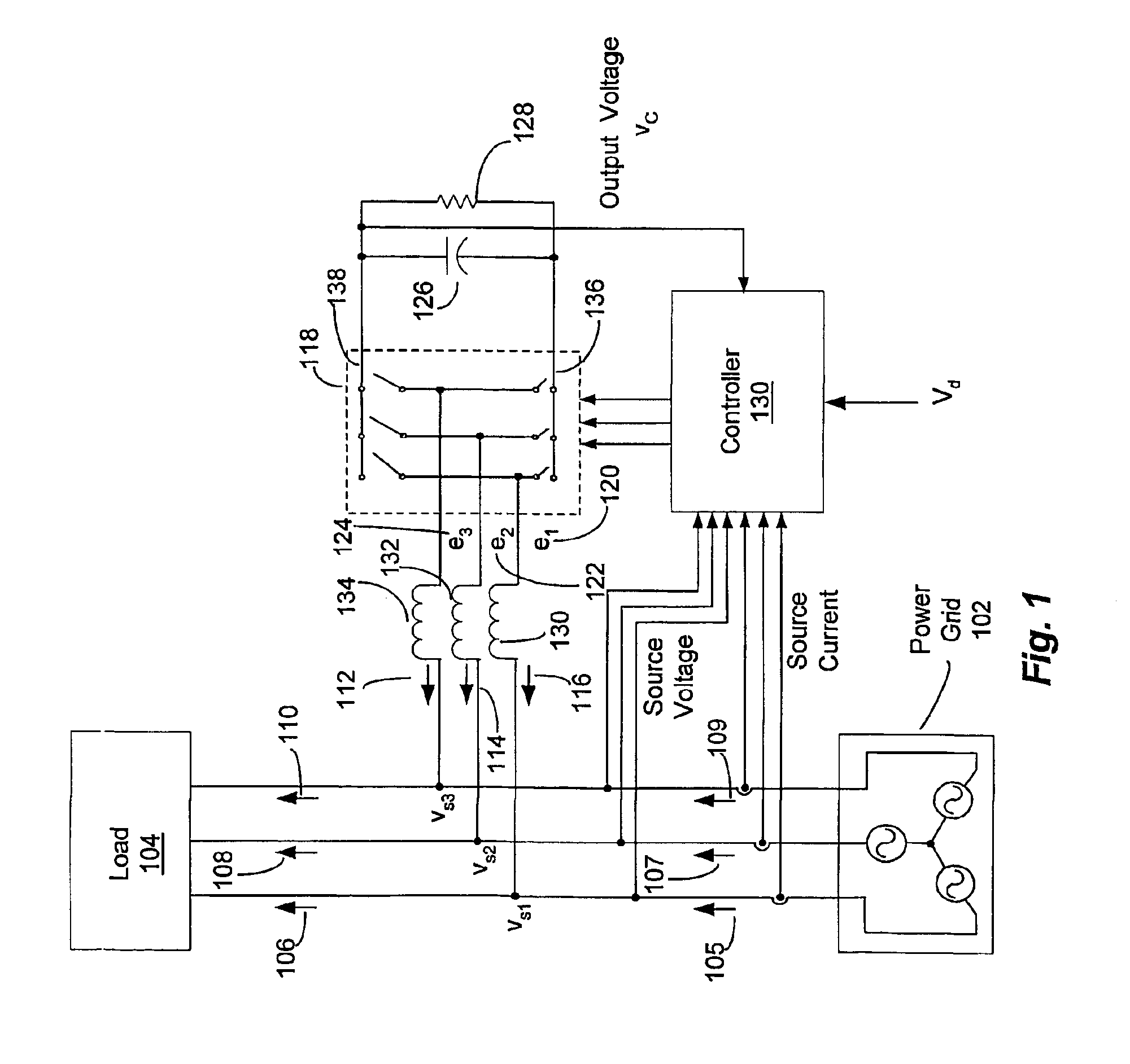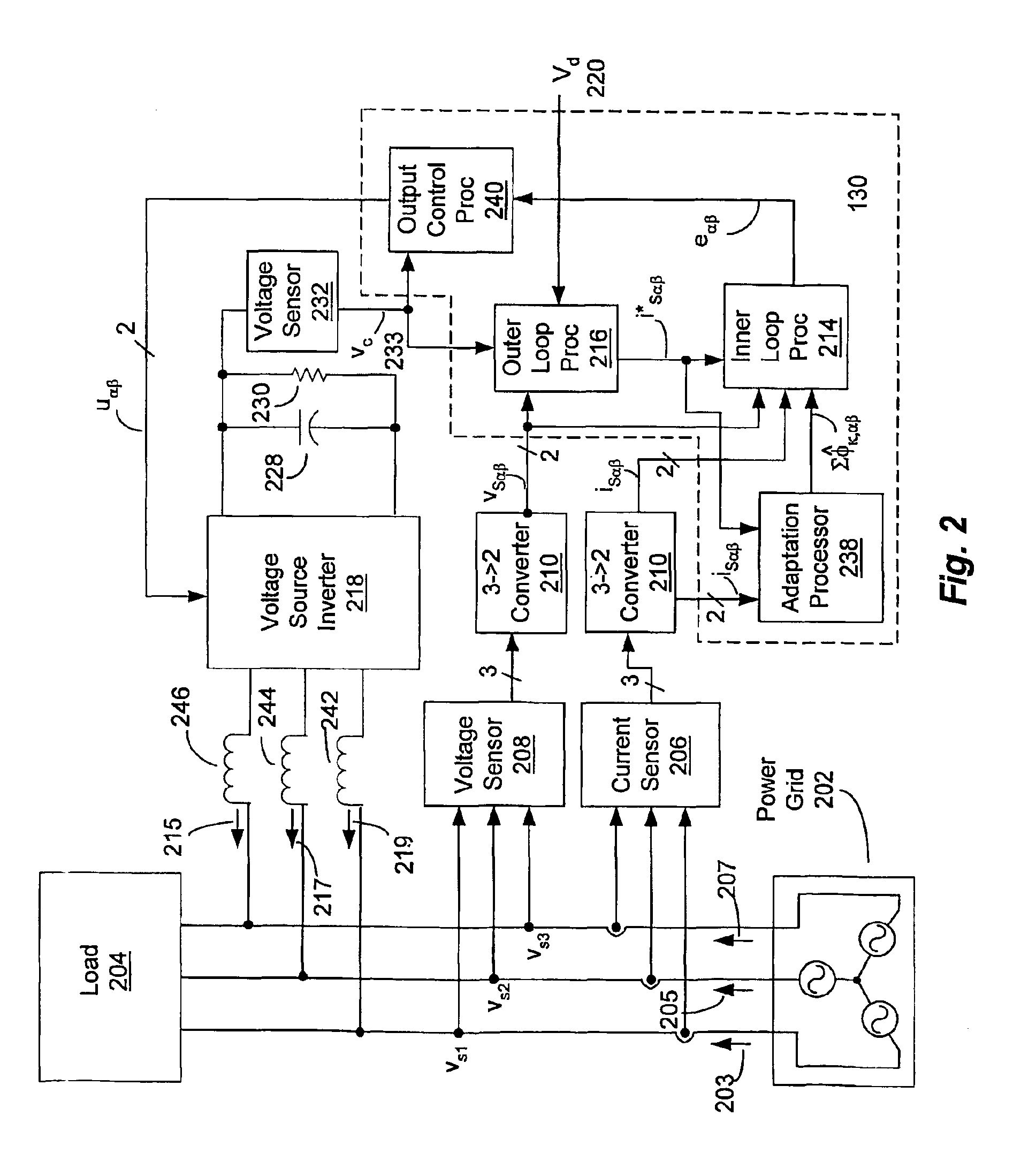Adaptive controller for d-statcom in the stationary reference frame to compensate for reactive and harmonic distortion under unbalanced conditions
a technology of d-statcom and stationary reference frame, which is applied in the direction of process and machine control, ac network to reduce harmonics/ripples, instruments, etc., can solve the problems of reducing the ability of the d-statcom system to track, reducing the bandwidth of the various control loops within the d-statcom, and reducing the power system performan
- Summary
- Abstract
- Description
- Claims
- Application Information
AI Technical Summary
Benefits of technology
Problems solved by technology
Method used
Image
Examples
Embodiment Construction
FIG. 1 depicts a controller and a three-phase three-wire voltage source inverter configured as a distribution static synchronous compensator (D-Statcom). The system includes a power grid 102 that provides source currents 105, 107, and 109 corresponding to the first phase, second phase, and third phase respectively, along with source voltages V1, V2, and V3 for each phase respectively. The three phase load 104 includes independent non-linear distorting loads (not shown), wherein each phase has a corresponding non-linear distorting load. Since each of the independent loads does not have to be equal to any other load, the load currents 106, 108, and 110 are unbalanced. Additionally, the load currents 106, 108, and 110, can have unique harmonics disturbance signals thereon resulting from the individual load attached to the corresponding phase, with the only restriction that the sum of all three currents equals zero.
A three phase voltage source inverter 118 that is capable of providing a...
PUM
 Login to View More
Login to View More Abstract
Description
Claims
Application Information
 Login to View More
Login to View More - R&D
- Intellectual Property
- Life Sciences
- Materials
- Tech Scout
- Unparalleled Data Quality
- Higher Quality Content
- 60% Fewer Hallucinations
Browse by: Latest US Patents, China's latest patents, Technical Efficacy Thesaurus, Application Domain, Technology Topic, Popular Technical Reports.
© 2025 PatSnap. All rights reserved.Legal|Privacy policy|Modern Slavery Act Transparency Statement|Sitemap|About US| Contact US: help@patsnap.com



